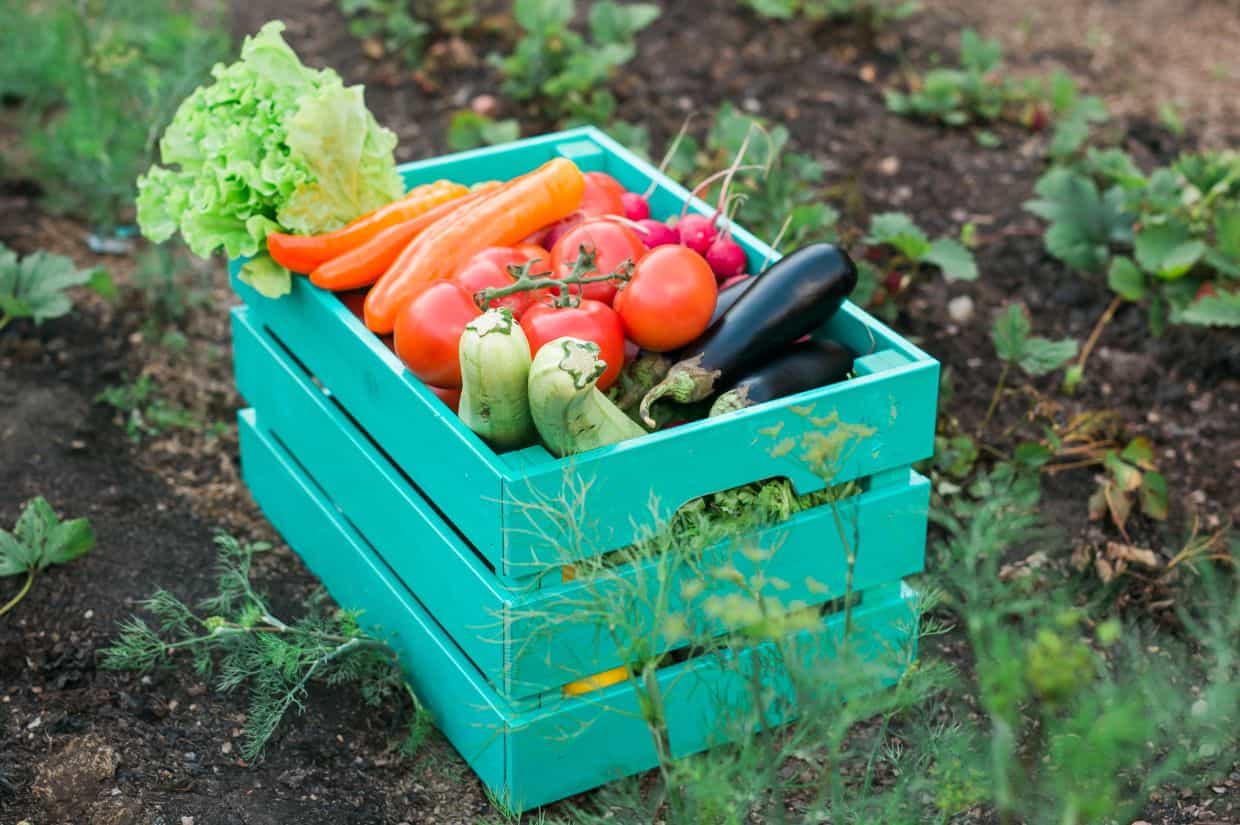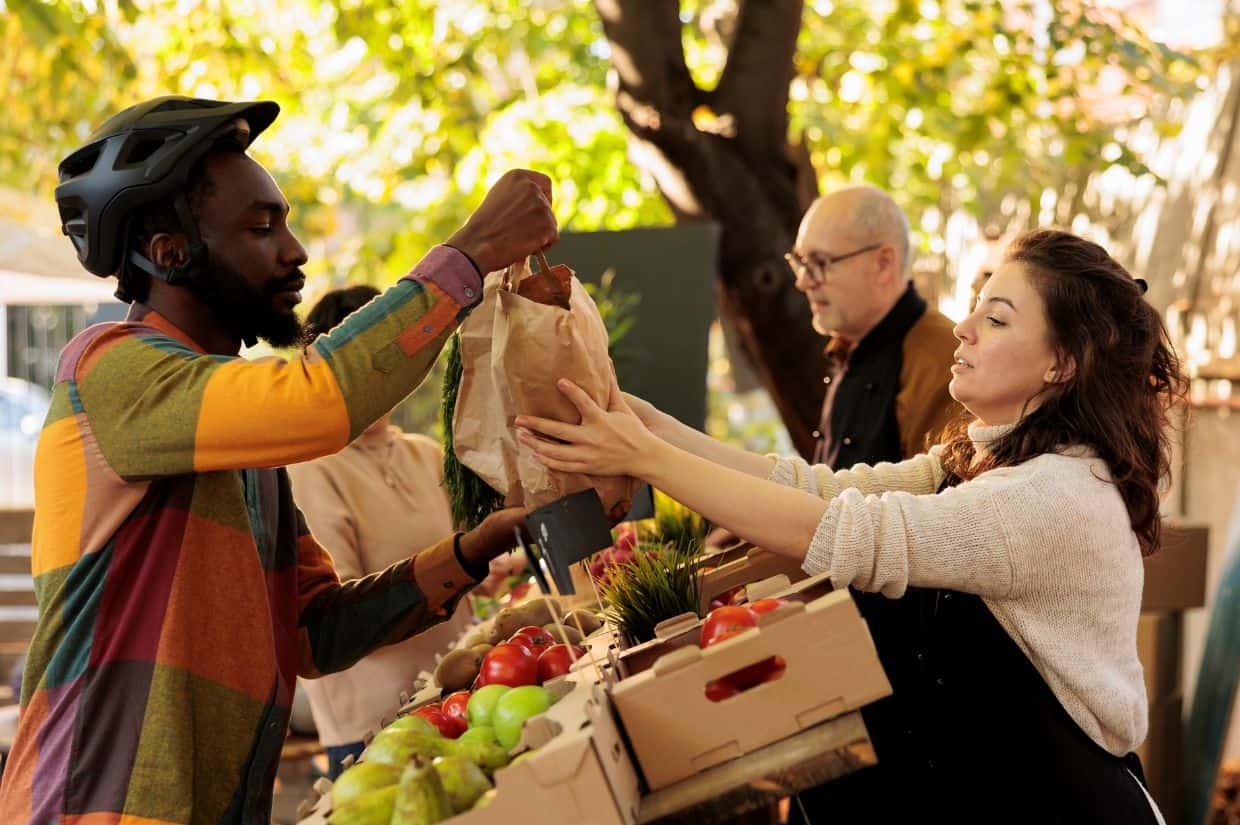Exploring local foods will tantalize your taste buds while forging meaningful connections within your community. Here’s your roadmap for embarking on a journey to discovering hidden opportunities right in your backyard, so you can embrace local ingredients and their many benefits.

An introduction to local food
Local food refers to any food produced, grown or sourced within a relatively close geographic proximity to where it is consumed.
Usually, a 100-mile radius marks the area, although this can vary depending on context. The key idea is that local food is meat, herbs and produce coming from nearby regions rather than being transported over long distances.
The FDA’s economic research report states that local food emphasizes supporting local farmers, purchasing directly from food producers, shopping at local markets and even participating in growing, hunting or fishing for your food.
In summary, local food is contained within a specific geographic area and promotes a relationship between consumers and producers.
The benefits of choosing local food
You might be surprised by the impact simple food choices have. Opting for local options doesn’t just affect you; it extends to the betterment of your greater ecosystem as well.
Freshness and flavor
Fresh local produce stands in a league of its own when compared to items shipped from afar.
Local harvests are picked at their peak, delivering unbeatable flavor and nutritional value. In contrast, long-distance produce often loses freshness and nutrients during transit. Think about what the difference fresh ingredients make to simple recipes like garlic butter, where the flavor has to pop.
Additionally, local food is seasonal food. When ingredients are in season, they’re at their prime, resulting in unparalleled taste.
Opting for local means choosing vibrant, tastier ingredients that truly shine on your plate.

Support to the local economy
Choosing local food is more than just a culinary decision. It’s a powerful way to contribute to your local economy. When you buy from nearby farmers, a larger share of the retail price returns to their hands.
Producers can receive a range equal to and upwards of more than seven times the price they would get from mainstream supply chains. This arrangement ensures that producers receive fair compensation for their hard work and dedication despite the additional distribution and marketing expenses.
Meaningful connections
Beyond economics, buying locally also fosters a strong connection between consumers and the people who grow their food.
In some cases, like growing an indoor herb garden, the consumer can also become the producer of their own goods. This direct link adds a personal touch to your meals, allowing you to appreciate the care and effort that goes into cultivating each ingredient.
Farmers’ markets and community-supported agriculture programs play a significant role in nurturing meaningful connections. They offer face-to-face interactions with growers, enabling you to ask questions, gain insights and build relationships that extend beyond the transaction.
Through these avenues, you become part of a community that values fresh food, sustainable practices and the shared experience of supporting local agriculture.
FDL’S 75 Best Bites

Our cookbook with 75 tasty recipes will be your go-to kitchen companion for easy dinners with ad-free recipes right at your fingertips. Crafted by experienced chefs and recipe developers, this collection offers a treasure trove of tried-and-true dishes that make mealtime a breeze.
Get the Recipe: FDL’S 75 Best Bites
Enhancing environmental awareness
Another notable benefit of local foods is that the total distance from farm to plate is significantly shorter than goods traveling across continents. This generally reduces resource and energy consumption associated with transportation.
Furthermore, local food minimizes the need for industrial-scale processing and excessive packaging.
Local food also plays a role in promoting food security and effective resource management on a regional scale. Dependence on distant food sources can leave communities vulnerable, but local production begins to decentralize the food supply. This empowers communities to take charge of their own food resources, ensuring a level of self-sufficiency.
It’s worth noting that local production often embraces organic practices, holistic land management and permaculture techniques. These methods prioritize ecosystem health and the preservation of natural resources. By choosing local food, you can vote with your dollar to make small steps toward positive changes.

Exploring local food options
Now that you’re equipped with a deeper understanding of local food’s benefits and opportunities, it’s time to take action and embark on your journey of discovery. But where do you start?
Begin by exploring the most practical ways to connect with local farmers, markets and programs offering fresh, flavorful ingredients. By tapping into these local resources, you’ll savor the rewards of supporting nearby producers and play an active role in nurturing a sustainable, community-driven food ecosystem.
Farm-direct retailers
Farm-direct retailers are your direct link to the source of local food. These establishments, including farm stands and on-site or online storefronts, offer a unique opportunity to purchase produce, meats and dairy products straight from the producers themselves.
Farmers’ markets
Farmers’ markets are bustling hubs of local food discovery. These lively gatherings offer a kaleidoscope of fresh produce, artisanal products and the chance to interact directly with growers.
Community-supported agriculture programs
Community-supported agriculture (CSA) programs provide an exciting way to connect with local farms. Subscribing to a CSA allows you to receive a share of the farm’s produce regularly. CSA programs introduce you to various fresh, locally grown items and encourage you to explore new foods you might not have tried otherwise.
Local food festivals
Local food festivals bring communities together to revel in the flavors and traditions of their region. With a mix of delectable eats, live entertainment and educational activities, local food festivals provide a unique opportunity to immerse yourself in the rich tapestry of your local cuisine.

How to find local food near you
When it comes to discovering local food sources in your area, a range of online directories and platforms can be invaluable resources.
Here are some platforms to kickstart your exploration and connect you with the local food scene:
- USDA’s Local Food Directories: Connect with CSAs, farmers’ markets, food hubs, on-farm markets and agritourism listings.
- Local Harvest: Search over 40,000 listings of farmers’ markets, CSAs and farms.
- Eat Wild: An extensive directory of small family farms across the United States and Canada prioritizing wholesome practices.
- Real Milk: A platform to help individuals locate sources of raw milk through an online directory. The initiative has grown to over 2,000 listings across various sizes and types of farms.
- Eat Well Guide: Discover restaurants, markets, farms and food events prioritizing local, sustainable and organic options.
With these resources at your fingertips, you’ll be well-equipped to explore the local food treasures right in your own neighborhood.
Final thoughts
From supporting farmers to enjoying fresh flavors and forging community connections, the advantages of local foods are diverse and meaningful.
Take the next step by immersing yourself in local farmers’ markets, embracing CSA programs and connecting directly with producers in your area. Start today and savor the goodness right in your own backyard.
Jessica Haggard is a lifelong recipe lover, blogger, and author of multiple cookbooks. She helps people find success with gluten-free, low-carb and keto cooking at Primal Edge Health.
This article originally appeared on Primal Edge Health.